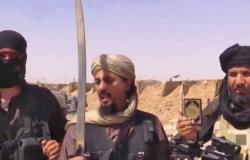Extremism and Ethnicity Part I - The ISIS lesson: Ethnicity Is Key

In the first part of this new six part series, Roland Benedikter begins to develop his argument that fighting extremism worldwide will require institutional solutions for ethnically problematic areas and new task forces at the interface between ethnicity and religion.
Now that Tikrit has been retaken and the so-called “Islamic State in Iraq and Syria” (ISIS), or emphatically just the “Islamic State” (IS), has lost large parts of its oil fields and is in retreat on most fronts according to internal reports of the German Secret Service (Bundesnachrichtendienst) of April 8, 2015, some provisional conclusions about the intermediate lessons of the case can and should be formulated despite the ongoing fight that will probably take years to bring to an end.
First, among the lessons of the furious rise of ISIS and its conquest of vast areas is the importance of ethnic factors. The exceptionally rapid conquests of ISIS in Iraq would not have been possible without the support of local Sunni tribes who feel repressed by the national Shiite majority. Despite prior conflict between Sunni tribes and early organizations of ISIS since 2006, one starting point for pro-extremist mobilization was the perceived exclusion from power which led many regional Sunni leaders to the conviction that the government of Nuri al-Maliki (2006-14) was an ethnic and religious dictatorship, where the only means to survive was to fight. As the Subject Matter Expert (SME) Elicitation Summary Pentagon Report on ISIS of July-November 2014 rightly asserts, after the ousting of Saddam Hussein, the implementation of a democratically approved government and the eventual withdrawal of Western troops until December 2014,
“Power in Iraq was primarily held by Shia backed factions. Iran in particular held great sway over events in Baghdad. While the Kurds represented a relatively smaller group within the population, their level of unity and organization made them a very effective bloc within the Iraqi power structure. The Sunnis, however, were not united, and were subject to actions by other factions born of fear of Sunnis returning to power… ‘We (the U.S.) threw them (the Sunni tribes) under a bus. We didn’t deliver them any kind of protection or political autonomy or self-determination in any way. We gave them back to the tender mercies of Maliki, and we know how that ended up. And they have all rushed back to the skirts of ISI(S) in a sense…’”
Islamic radicalization in the name of an alleged ancient “purity” was not the origin. Instead it was a consequence, not least to create a platform for unifying the different Sunni tribes on a common ground, mindful of their strongly differing personal relationships with the leaders of IS who are believed in the majority to be representatives of the old Sunni-dominated regime of Saddam Hussein. Their ability on the battlefield has been demonstrated in the strategic counter-offensives on Ramadi and the conquest of the al-Thirtar dam in April, in the midst of the offensive of the Iraqi army.
The participation of Shiite militias in the recapture of Sunni core areas including Tikrit in March 2015—equipped with Iranian weapons and with the massive participation of Iranian “counselors” alongside the regular Iraqi army—further contributed to give the conflict elements of an ethnic and religious confrontation between Shiites and Sunnis. Moreover, the withdrawal of some Shiite militia from the front of Tikrit in protest against Western airstrike support underscored that the conflict keeps a (probably unintended, but in any case counter-productive) flavor of potentially not being about the Iraqi nation in the first place, but about predominance of ethnic and religious groups over each other.
Consequently, the Iran-supported Iraqi army offensive since 2015 was read by many as being about Shiite dominance over Sunnis, not about reconquering and unifying a functional state against fanatics. Some of the fiercest supporters of ISIS are believed to be Sunni ethnic tribes of anti-governmental inclination partly even in conflict with each other, while others oppose ISIS not only out of ideological, but also because of tribal reasons, and are systematically massacred for their opposition. This was the case with the Sunni Albu Nimr tribe in November 2014 or the 127 members of Sunni tribes murdered in April 2015 in Al-Quaim in Al-Anbar province at the border to Syria during the Iraqi offensive.
The importance of ethnicity is further underscored by the fact that of the 31 groups that are allegedly supporting ISIS according to the Intel Center report of March 31, 2015, at least half have their origins in ethnic group and independence issues. And of the roughly 30,000 ISIS fighters believed to be battling in Syria and Iraq, around a third allegedly came to join the group because of previous or ongoing fights related to ethnic nationalisms, most of them associated in one way or another with Muslim issues. The report of the Chinese government of March 10 2015, that extremist members of the Xinjiang province Uighur Muslim minority are allegedly fight in Iraq and Syria with ISIS is just one hint to the fact that ISIS success has its roots not merely in the radicalization of religion. Rather—and more realistically—it is at the increasingly important interface between ethnic nationalism and a strategic relationship it cultivates with religion, within what has in the meantime become a broad but still loosely connected international movement, that ISIS was able to access and to a certain extent to win over potential members.
Whether China’s statement was propaganda or not: What has contributed to ISIS’s rise is not “religion” with its (in principle) universal implications, but “religion combined with ethnicity”, that is, with group relations in concrete contexts on the ground. It is exactly the intersection, where ethnic nationalism meets with religious fundamentalism, that both elements are pushed by each other to the point where they become radicalized, sometimes to the extent of being nearly indistinguishable from each other.
Summing up these factors, I agree with the analysis of the BBC’s Middle East expert Fawaz A. Gerges that 'the key to weakening IS lies in working closely with local Sunni communities that it has co-opted.'
The question though is, what that concretely means: Diplomacy, “soft power” and “sympathy” politics like in Afghanistan? Importing access to and patterns of Western economy in order to develop individualism? Most aspects of such strategies widely failed in non-urban Iraq, and they are likely to fail again.
The lesson? If it is plausible that
“We need to understand the intangible things that make ISIS so dangerous… understanding the contextual background that lies behind the actions taking place can help to provide a more holistic view on the current situation”.
This will not be possible without addressing the interrelation between ethnicity and religion under the concrete contextual conditions of the areas where they meet, and where they produce radicalism of a new, until recently still unthinkable brutality. Without addressing the interface between ethnicity and religion more closely and concretely, and building practical solutions to mitigate its conflict potential, a lasting and sustainable pacification will not be possible in Iraq and Syria—not even after the probable military and political victory over the ISIS extremist’s army.
To be continued…
Roland Benedikter, Dr. Dr. Dr., born 1965, is Research Scholar at the Orfalea Center for Global and International Studies of the University of California at Santa Barbara. The author thanks Victor Faessel, Phd, Program Director of the Orfalea Center for Global and International Studies of the University of California at Santa Barbara (UCSB), for advising on this text.
Photo credit: quapan / Source / CC BY


